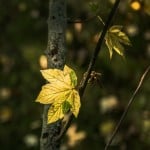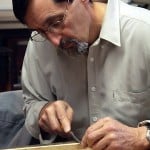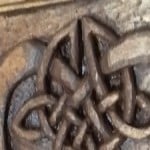Polishing the flat side
Welcome! / Forums / General Woodworking Discussions / Polishing the flat side
- This topic has 14 replies, 10 voices, and was last updated 11 years, 5 months ago by
 ejpotter.
ejpotter.
-
AuthorPosts
-
1 February 2013 at 10:28 am #7289
Hey all,
I’m currently working on restoring an old Record 4 1/2. I’ve got it looking pretty sweet but now I’m down to polishing the flat side of the cutting iron and I’m having some issues….
I’m using a 220 grit diamond plate and while lots of the iron is looking shiny, there are a couple of patches that just don’t seem to want to budge. They just stay dull and lifeless.
Is it just a matter of keeping on grinding? Anyone have any similar stories to give me hope?
 1 February 2013 at 10:34 am #7290
1 February 2013 at 10:34 am #7290Hi Lee,
Flattening the back of the iron can be an exhausting task! Just keep going until the scratch marks are constant across the back. It’s not a quick process but you only need to do the first 1/8″ or 1/4″ or so. No need to polish the whole back.
Something I’ve done a couple of times to speed the process up (I’ve also got the 220 grit diamond stone) is to get a piece of 80 grit wet/dry sand paper, stick it to a known flat surface (granite tile or somesuch) and use that as the abrasive. It’ll hog off more material and you can put a splash of water on it as lubricant. Once the scratch marks are constant, go back to the diamond stones, work through the grits and finish on the strop.
Good luck!
George.

Hi Lee,
my experience is that the diamond stone is not made for heavy tasks like that. I only use them for the final steps when the blade is already flattened on sandpaper. I would not have expected the 250 diamond stone to wear so quickly but mine did because in the beginning I treated all the flat sides on it. Sandpaper and a flat surface work a lot quicker and don’t transfer your coarse stone into a fine stone.
The low spots are often behind the cutting edge because the previous owner might have only polished a short area on the flat side for many years. So If you try to level this area with the area behind it takes a lot of effort. Sometimes it takes 10 minutes to have 95 percent shiny and another 3 hours for the rest. My workshop has no air condition. In summer I could go without liquids for the stone because the sweat dripping of my face was enough to keep it wet 🙂
The shavings are worth the pain 🙂
Hi lee. For initial flattening of planes and irons I use a 220 grit belt from an electric belt sander.As someone suggested you need something flat either a piece of slat,granite or something similar.I cut this just short of the internal dimensions of the belt and then fit two small blocks of wood ,one each end to tension the belt.The advantage of this system is that you can move the belt around as it wears . I mount mine in the vice to give a firm base to work on.
Attachments:
You must be logged in to view attached files.
 1 February 2013 at 1:56 pm #7300
1 February 2013 at 1:56 pm #7300The nice thing is that this flattening is generally a one-shot deal.The chisel and plane irons stay flat once worked and now you only need work on the bevel from here on.
 1 February 2013 at 5:53 pm #7306
1 February 2013 at 5:53 pm #7306Dave, i am really surprised. My new Narex chisels arrived dead flat and pretty doggone sharp.

Ron, well lets just say that it took me all weekend and two packages of 220 grit sandpaper to get them flat. I was rather dissatisfied with them. You know your in trouble when the back has a paisley pattern. I’ve been slowly buying the stanley sweetheart socket chisels lee valley sells as they fit my hands a lot better.
2 February 2013 at 12:39 am #7321I only concern myself with the 1/8 to 1/4 in. immediately behind the blade. I want this to be flat and polished. No need to polish all the other stuff. What you want to avoid is a “belly” on the back of the plane.
Somewhat more controversial is to avoid quite a bit of back flattening (for plane blades, not chisels) by using the David Charlesworth’s “ruler trick.” As long as you have no belly on the back, the ruler (very thin ruler) trick results in high polish only on the cutting edge. It diminishes the area of concern to only the very edge. Some people don’t like the idea of the ruler trick. But, like a lot of things in woodworking, there’s more than one way to do things and get similar results. I use the ruler trick for plane irons.
Here’s a Lie-Nielsen video on sharpening. The ruler trick is illustrated around the 2 min 15 seconds mark. Although the illustrator uses water stones, the same thing can be done with oil stones or diamond plates of equivalent width. The stones used in the video are 3 in. wide.
2 February 2013 at 3:53 am #7334100 grit on granted or glass does an excellent job of flattening the surface, eliminating high and low spots. An interesting note; I took a class on tuning up a hand plane and I brought an old Stanley #4 and another student brought a brand new Wood River plane. It took twice as long to flatten and polish the Wood River than it did the Stanley. I an fairly certain that the reason was the flatness of the original surface and not that the Wood River steel was harder. Any opinions???
2 February 2013 at 4:32 am #7335Curt,
Not sure about the hardness of the steel. Woodcraft’s website advertises Wood River planes with A-2 steel. Not a steel expert but A-2 is considered really hard. Nevertheless, the flatness of the lapping surface and the lapping abrasive makes a big difference.2 February 2013 at 4:45 am #7336Thanks Gary. I never thought I would be interested in the hardness of the metal in a plane. But after wearing my arm out getting it flat it has become of great interest!!!!
Curt
2 February 2013 at 6:31 am #7339Curt,
I’d be greatly disappointed to pay a premium price for A-2 and the it not be milled well. I have a few Lie-Nielsen planes with A-2. Luckily, they have all been flat and pretty well polished. Definitely usable out of the box. Same with Veritas. However, if they weren’t flat, I’d send them back.I’ve also rehabbed some old Stanley’s. Never had a significant problem unless the previous owner had lapped a belly on the back. I really like the steel in older Stanley’s. Easy to sharpen, takes a keen edge, and stays sharp for a reasonable period.
Gary
Curt,
I have a couple of Wood River planes and several old Stanleys. My experience suggests that the machining makes the difference. Wood River does not use A2 steel for the bodies or irons of their planes. I bought the WoodRiver planes before I knew anything, and (somewhat unfortunately) had to learn a lot to fettle them. Caveat: this was an early model. Although Quangsheng (the mother company) copied Lie-Nielsen, WoodRivers are not Lie-Nielsens. Knowing what I know now, I would absolutely buy an old Stanley (for less money), than a new WoodRiver, even though the V3s are supposed to be much better. By the way, these are not hunk-a-junk planes, very functional with a little fettling, but I would rather spend my energy resuscitating an oldie.
-
AuthorPosts
- You must be logged in to reply to this topic.
